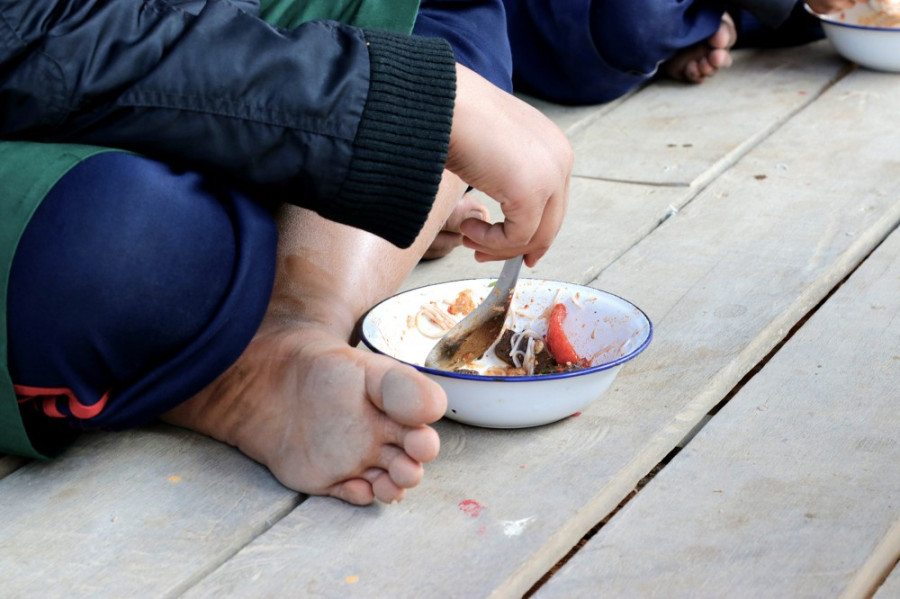Health
Children suffer severe malnutrition in Solukhumbu villages
Pregnant women, lactating mothers and children under aged 24 months deprived of nutritious flour for months.
Arjun Poudel
When health workers measured the weight of Kumari Basnet’s baby girl just after birth, they told the mother that the infant was healthy, weighing 3.5 kilograms, and that there was no need to worry.
But seven months later, the baby girl lost weight.
When health workers recently carried out a nutrition assessment, they found the girl to be severely malnourished.
“Instead of gaining weight, the baby is losing it,” Keshav Prasad Timalsina, an auxiliary health worker, serving at Ward-2 of Thulung-Dudhkoshi Rural Municipality in Solukhumbu, told the Post over the phone. “We are concerned about her health.”
Health workers use mid-upper arm circumference tape to measure malnutrition among children aged between 12 and 59 months, but it can also be used for children over six months whose length is 65 centimetres.
According to the tape, the green zone suggests a child’s nutrition level is normal, the yellow zone suggests the child is malnourished and the red zone means the child is acutely malnourished.
According to health workers, many children in Thulung-Dudhkoshi Rural Municipality were found to be in the yellow zone.
Malnutrition is a silent crisis in Nepal. According to the Nepal Demographic Health Survey of 2016, 36 percent of children under five years of age in the country suffer from chronic malnutrition (stunting or low height-for-weight) and 10 percent suffer from acute malnutrition (wasting or low weight-for-height).
Another 27 percent of children are underweight and one percent are overweight.
Doctors say nutrition deficiency in mothers during pregnancy increases the risk of complications during childbirth and increases the likelihood of maternal and neonatal deaths as well as chances of low birth weight.
Timalsina informed that health workers serving in the village and other people of the locality collected donations for Kumari so that she could take her child to Mission Hospital in the district headquarters for treatment. She was at the hospital for 22 days and was discharged after her child’s weight reached four kilograms.
“But there is no improvement in her health, the family lacks means to ensure nutritious food for the child,” said Timalsina.
To ensure that no child suffers from malnutrition in the Solukhumbu district, the Ministry of Health and Population used to provide three kgs of fortified nutrition flour, under a programme launched in 2014, to pregnant women, new mothers and children aged six-24 months every month. But after the new federal set-up, the federal government transferred the budget to provincial governments to buy nutritious flour. The provincial governments, however, have failed to procure the flour till date.
“I am talking about the problems faced by one small village,” said Timalsina. “If we carry out an extensive assessment, I believe we will come across malnutrition issues in every other village.”
The Management Division under the Department of Health Services said that it had assisted the Karnali Province, another severely malnourished region, to procure the fortified flour. “But we returned the budget to Province 1 government after no one showed interest to supply the flour despite our several attempts,” said Ramesh Adhikari, chief of the Division. “Pregnant women, lactating mothers and small children in Karnali will get the nutrient flour soon but I am not aware of the situation in Solukhumbu.”
A study shows 60 percent of children under-five children in Karnali and Solukhumbu are stunted, which is an indicator of chronic undernutrition. Karnali region and Solukhumbu district are also the poorest and most food insecure, compared to the national average.
Udhav Dhungana, a health coordinator of Thulung-Dudhkoshi Rural Municipality, said that the Provincial Health Office of Province 2 had informed that they were working to procure the nutrition flour.
“Pregnant women and lactating mothers come to our health facilities for the fortified flour,” Dhungana told the Post over the phone, “but we are forced to send them back empty-handed.”




 7.12°C Kathmandu
7.12°C Kathmandu














